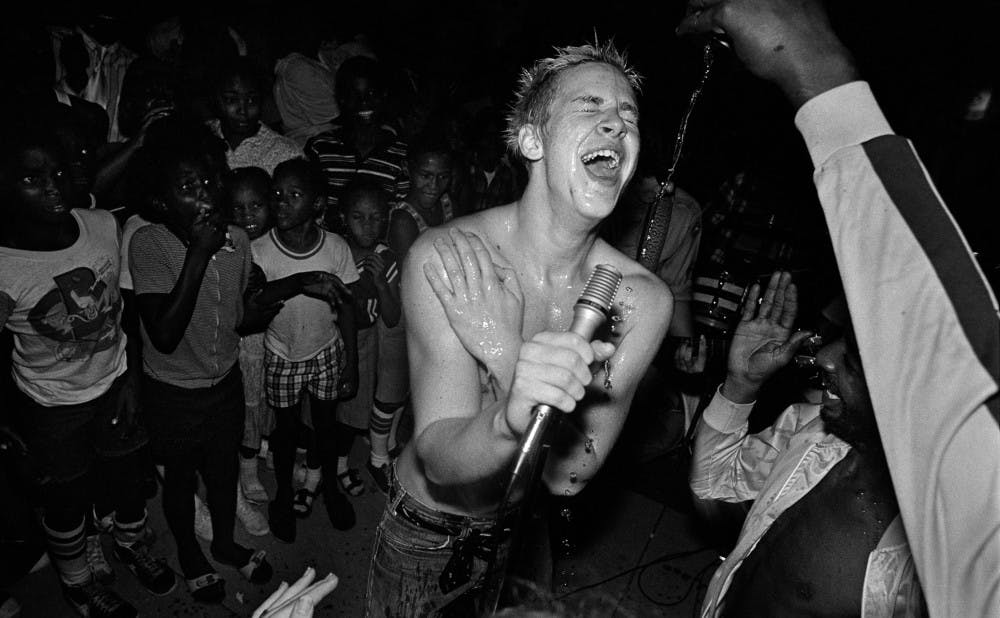"Hard Art, DC 1979," a photographic exhibition on the burgeoning punk rock music scene of late 1970s Washington, D.C., is currently on display at the Center for Documentary Studies until Oct. 11, 2014.
The exhibition features photographs shot by Lucian Perkins, Pulitzer Prize-winning photojournalist and longtime staffer of The Washington Post. His photographs compose the book "Hard Art, DC 1979," which includes commentary from writer Alec MacKaye and an essay from former Black Flag frontman Henry Rollins.
Perkins began the project in 1979 while an intern at The Washington Post. He was inspired to document the D.C. punk scene after witnessing a performance by the seminal, local band Bad Brains.
“The crowd was all high school kids,” said Perkins. “They had a really good lead singer who had the charisma of James Brown.”
At the end of the 1970s, Washington, D.C., was moving away from the disco scene towards a bolder and more uncertain cultural landscape. Perkins saw an opportunity for his first big project as a photojournalist.
“It was a very straight-laced city,” said Perkins. “The new wave and art music scene was just starting to take over. There were a few cool, artsy underground music bars.”
1979 proved to be a crucial year for the emergence of D.C. punk music. Bands like Bad Brains, Trenchmouth, the Teen Idles, and the Slickee Boys rose to prominence by playing shows to nearly 200 fans at a time in crowded bars or in the Valley Green Apartments in Southwest Washington.
Perkins, noted for his focus on social and cultural issues both domestic and global, found the counterculture aspects of the scene fascinating.
“I grew up in the 1960s with the anti-war movement. I picked up the same sort of passion with their music. What really stood out was their raw energy.”
D.C. punk grew incredibly popular in the following years, with seminal DC bands such as Fugazi and Ted Leo and the Pharmacists citing the movement as inspiration for their own music.
Perkins revisited the photos after his assistant went through his negatives and discovered them. After this, he reached out to MacKaye—brother of Fugazi guitarist and vocalist Ian MacKaye and avid punk concertgoer—to help him produce what became "Hard Art, DC 1979."
The Center for Documentary Studies has hosted the exhibition since June, but plans to hold events to reintroduce it to the Duke community in the coming semester. Perkins will give a talk about his experience documenting the D.C. punk scene and other projects at a reception held on Sep. 17 from 6 p.m. to 9 p.m. On Sep. 18, exhibition curators Jayme McLellan and Lely Constantinople and MacKaye will host a roundtable discussion open to Duke students and the general public.
Perkins is excited to teach the Duke community about a fascinating segment of cultural history from our nation’s capital.
“It started with kids—involved art students trying to set themselves apart,” said Perkins “It grew from early beginnings to a much bigger movement.”
Get The Chronicle straight to your inbox
Signup for our weekly newsletter. Cancel at any time.

